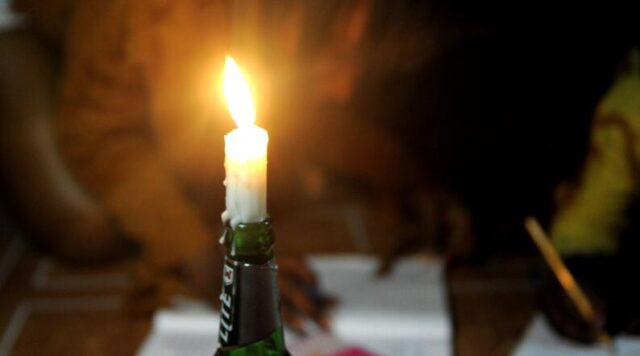‘Four in 10 people reported depression and 62% of people struggled with anxiety and panic, while some respondents reported an exacerbation of physical and psychological challenges.’
THE SOUTH African Depression and Anxiety Group (Sadag) says that just after Eskom’s long-term load shedding forecast in January, they conducted a survey that found that a total of 1,836 respondents out of 30,000 reflected on the ways that load shedding impacted their daily lives, their fears, their feelings, and how they were managing to cope in this crisis.
According to a project led by Dr Bronwyn Dworzanowski-Venter, a Senior Research Associate for the Faculty of Humanities at the University of Johannesburg, Sadag was especially interested in uncovering specific pressure points that could lead to negative psychological and practical outcomes.
The survey said that feelings of helplessness were often reported, with one respondent sharing that load shedding “has made me feel that I cease to exist, basically. My life feels like it’s at a standstill. What can I do? What must I do? I hate the feeling of pressure it puts on me.”.
“Alongside helplessness, employed survey respondents (74%) were expected to deliver work, despite outages, adding high levels of performance anxiety and work-related stress to the heavy financial demands caused by the secondary impacts of load shedding (eg, food spoilage, appliance breakages, etc),” said Sadag.
Sadag said that the entire sample seemed psychologically impacted in one way or another.
“It is not surprising, then, that 4 in 10 people reported depression and that 62% of people struggled with anxiety and panic, and some respondents reported an exacerbation of physical and psychological challenges,” added the organisation.
It added that one respondent said they felt as though the energy had been sucked out of them.
“Suddenly you become anxious and angry,” said the respondent.
Sadag said that, worryingly, 1 in 10 people have contemplated or had thoughts of suicide.
“I just sat in the dark and cried myself to sleep, and I am someone who is dealing with depression and suicidal thoughts,” said a respondent.
The group added that social relations between households were strained; 31% reported problematic family relationships and feelings of isolation.
“Load shedding has reduced social interaction between homes and within homes. As people scramble to complete all tasks when there is power, they tend to collapse into separate spaces in the dark. People also fear crime, and so they tend to stay in their dark homes, further reducing social coping,” said Sadag.
The survey found that for many respondents, the psychological impact was not due to power cuts themselves; they added that distress was highest when power was not returned on time or when there was an unscheduled power cut.
They added that 9 out of 10 people in the sample reported feeling worried when there is a non-scheduled power cut, and a further 91% raised the concern that power may likely not be returned for a long time (in the instance of an unscheduled interruption) – there is an anxious sense that the power system is strained and difficult to repair, even outside of load shedding times.
The survey also showed that 96% of respondents feared that load shedding will cause long-term damage to the South African economy, thus leaving many SA citizens in a worse state than before.
The survey also found that some people went along with the idea of a suspended existence by sleeping (44%) or “numbing out” on their phones (16%) during load shedding slots. Others chose to respond to work pressure by trying to meet professional obligations during outages (32%).
“Some chose to take a pro-active break and perform wellness activities such as meditation, yoga, or spending time in nature during scheduled power cuts (26%), and still others chose to exercise (20%).”
“Members of the Sadag community who showed the most resilience were those who had managed to plan effectively around load shedding schedules (10%) or who had the funds to erect solar alternatives (10%),” said the report.
The group added that some respondents refused to allow load shedding to get in the way of living, determined to “carry on as normal,” with or without an alternative power solution.
While others claimed the load shedding gave opportunities for wellness activities, such as meditation, spending time in nature, or reconnecting with family and friends. “During load shedding, we could simply [take some] me time after [completing] household chores”, as one respondent stated.
Dworzanowski-Venter said that although it isn’t clear when power will return or how to fix damage to the electrical, communications, and water infrastructure “we can and should build our own psychological insulation infrastructure and frame the crisis on our own terms”.








